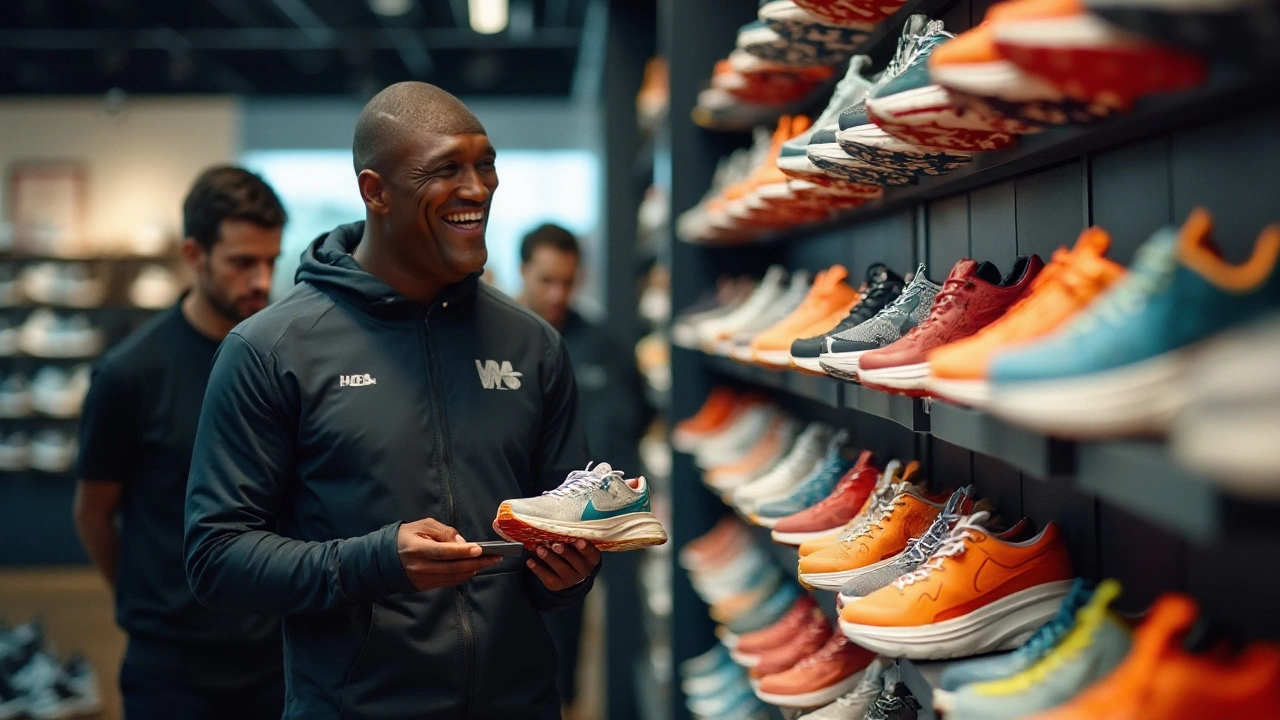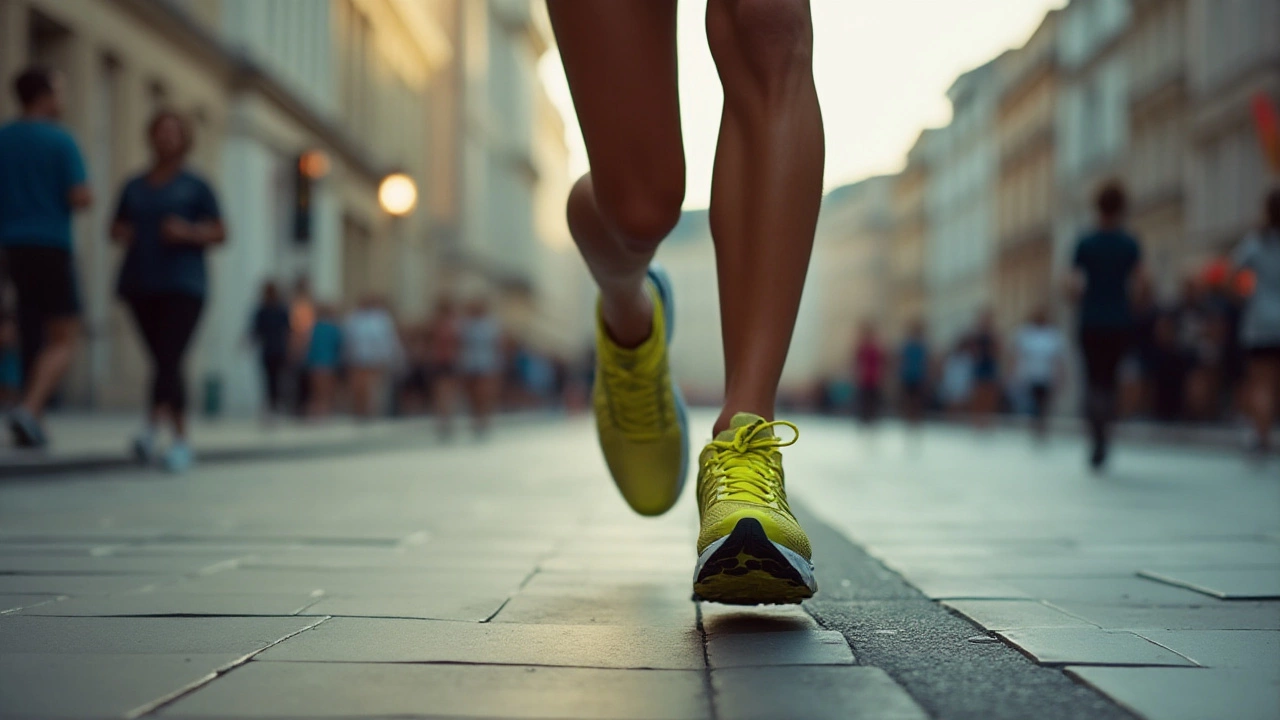The Rise of Hoka: Why These Running Shoes Are Taking Over

In the world of running shoes, where innovation meets the demands of everyday joggers and elite athletes alike, Hoka has carved out a niche that is hard to ignore. Unlike any other brand, their shoes catch your eye - and not just because of their striking appearance. With their thick, cushioned soles that resemble more of a marshmallow than a sneaker, Hokas have redefined comfort in the miles upon miles of pavement, trails, and tracks.
But what exactly makes these shoes the go-to choice for so many? Is it the cutting-edge technology, the celebrity athlete endorsements, or perhaps just the whisper of every runner who finally feels like they're gliding on air? As we delve into the allure of Hoka running shoes, prepare to discover what sets them apart and why they just might be the perfect fit for you, even if a marathon isn't on your bucket list.
- Hoka's Unique Design Features
- Influence of Athlete Endorsements
- Comfort and Performance on Road and Trail
- Community and Culture of Loyal Fans
Hoka's Unique Design Features
The meteoric rise of Hoka shoes is not just a stroke of luck; it's deeply intertwined with innovative design principles that challenge traditional running shoe norms. At the heart of these design features is the amplified cushion—a feature that catches the eye even from a distance. This isn't just a gimmick for a flashy appearance; it provides an unparalleled level of comfort that many runners have been searching for. The cushioning system is touted as being 2.5 times larger than traditional running shoes. Imagine, for instance, the sensation of landing on soft, yet stable, clouds with each stride.
While some might argue that such substantial cushioning would negatively affect the weight of the shoe, Hoka's engineers have cleverly maintained a feather-light feel. This is achieved through the use of advanced materials like EVA (Ethylene-Vinyl Acetate) foam, which is both light and responsive. It creates an environment where prolonged wear leads to minimal fatigue, even during high-mileage training. This kind of thoughtful design means runners can go the extra mile, quite literally, without undue stress on their joints.
A critical component of Hoka’s allure is the ‘meta-rocker’ technology. This innovative feature is all about the unique shape of the sole, which promotes a smooth, rocking motion. The strategic curve helps propel runners forward, mimicking a natural running gait and allowing for a swift transition from heel-strike to toe-off. It essentially assists the runner in maintaining momentum, which is particularly beneficial during races or long runs when fatigue sets in.
"Hoka's meta-rocker technology represents a breakthrough in footwear design by not just absorbing impact but actively enhancing the runner's stride," says Dr. Maria Valdez, a biomechanics expert.
The wide base of Hoka shoes also contributes significantly to their performance credentials. This design choice provides a stable platform that enhances balance across diverse terrains, whether that's the concrete jungle of your neighborhood or the rugged unpredictability of mountain trails. This stability, alongside the oversized sole, doesn’t compromise agility; rather, it increases confidence while tackling tight corners or rocky paths.
For those concerned about style and variability, Hoka doesn’t disappoint. With a spectrum of models tailored to different needs—from ultra-lightweight trainers to robust trail variants—the brand caters to a wide array of athletes. They consistently update their color palettes and designs, ensuring that their shoes are as stylish as they are functional. Ultimately, it's this blend of eye-catching design, superior comfort, and adaptability that has seen Hoka transition from a niche brand to a mainstream icon in the running community.

Influence of Athlete Endorsements
The rise in popularity of Hoka shoes owes much to the endorsements from renowned athletes across various sports. These endorsements aren't just a marketing ploy; they resonate with real value, drawing on the credibility and trust these athletes have earned. Take, for example, renowned ultramarathon runner Jim Walmsley, whose affiliation with Hoka has been a significant boost for the brand. His consistently stellar performances in Hokas – such as when he set the 50-mile world record – have shone a spotlight on the brand's running shoes, highlighting their reliability in extreme conditions.
Another standout influencer is Sage Canaday, a well-regarded figure in trail running circles. His decision to align with Hoka stems from genuine belief in their superior performance features, a narrative that resonates deeply with amateur and professional runners alike. Canaday’s track record in various mountain and trail competitions, often navigating treacherous terrain with unparalleled ease, provides an authentic testament to the shoes' prowess. It's one thing to see a product advertised, but another to see it excel under the grueling demands of top-tier competitions.
What adds more substance to Hoka's endorsement strategy is the broad spectrum of athletes involved. This doesn't just limit the brand to the running community. From triathletes like Heather Jackson, who trusts Hokas to carry her through multi-discipline events, to even teams in mainstream sports, the widespread adoption of these shoes elevates their stature. These athletes serve as real-world case studies, proving their worth beyond any digital or print ad's limited reach. Their testimonials are powerful, real-life stories that invite both skeptical and curious consumers to rethink their current footwear choices.
"When I first slipped on a pair of Hokas, it was like I was running on clouds – the comfort, the bounce," says Jackson in an interview. "It's not just a shoe; it's an experience that keeps me in my best shape day after day. More athletes are discovering this, trusting their race day fate to Hokas without a second thought."
Impact on the Running Community
The ripple effect from these endorsements can be seen far and wide. Hoka running shoes have stirred curiosity in online forums, social media discussions, and local running clubs. Conversations are not centered around stylish looks but delve into the real benefits – improved performance, reduced fatigue, and enhanced recovery. When an athlete trusted for their expert judgment gives testimony, it sways opinions and often converts the unconvinced. This level of trust has proven invaluable in building a formidable community around the Hoka brand.
One visual cue of this influence is evident at major marathons and running events where the bold, signature design of Hokas is a common sight among the leading pack. It's a subliminal message that speaks volumes: if they can aid the best, they can benefit anyone. This sort of visibility exponentially grows the brand, planting it firmly in the psyche of those considering their next shoe purchase. It's no surprise then that Hoka has shot up not just in sales but in name recognition, making it the shoe to try and ultimately to own.

Community and Culture of Loyal Fans
The vibrant community surrounding Hoka shoes is a testament to their broad appeal and the brand's knack for creating not just footwear but a lifestyle. Across social media and in local running clubs, conversations are filled with enthusiastic testimonials about how these shoes have transformed entire running experiences. Those thick, cushioned soles have become iconic, creating a visual identity that resonates not only with seasoned athletes but also with weekend warriors who find joy in every comfortable step.
Social media platforms are teeming with groups like ‘Hoka Nation’ where thousands gather to share their experiences. These groups celebrate achievements ranging from completing marathons to discovering newfound joy in morning jogs. The conversation is often dominated by the shared notion that once you try Hokas, returning to another brand feels like a step backward. It's quite common for members to swap tips on the best models for various environments, be it trail or tarmac, which model offers the best cushioning, or how to style their standout pair of Hokas.
Moreover, several studies reflect the rapid growth of this community. According to a recent survey, 60% of Hoka users reported decreased joint pain, attributing this improvement directly to the enhanced cushioning. Running events have even started to see a ‘Hoka effect’, where participants sporting these shoes often express a confidence boost, likely due to the unmistakable comfort and performance benefits. These shoes aren't just about aesthetics or metrics; they foster a culture of inclusivity and support, encouraging more people to take up running by mitigating common pains and injuries.
"Hokas have changed the running game entirely," says Dr. Emily Rhodes, a well-known sports podiatrist. "Patients who switch to Hokas often notice immediate relief and report an improved sense of balance, especially on uneven terrain."Community events and fun runs sponsored by Hoka emphasize this broad appeal, often featuring shoe trials where enthusiasts can literally take a pair for a test jog around a park or trail. This experience often converts skeptics who hadn't realized how much of a difference a shoe can make until they slipped on a Hoka and felt the literal spring in their step.
There's also an undercurrent of innovation appeal that draws in fans. Knowing that the company continually improves design with each new running challenge inspires a forward-thinking, enthusiastic user base. In essence, whether you’re clocking in miles on a scenic nature trail or jogging through city streets, being part of the Hoka community not only equips you with great shoes but also connects you with a supportive, like-minded group of individuals who celebrate every stride, no matter the size.
